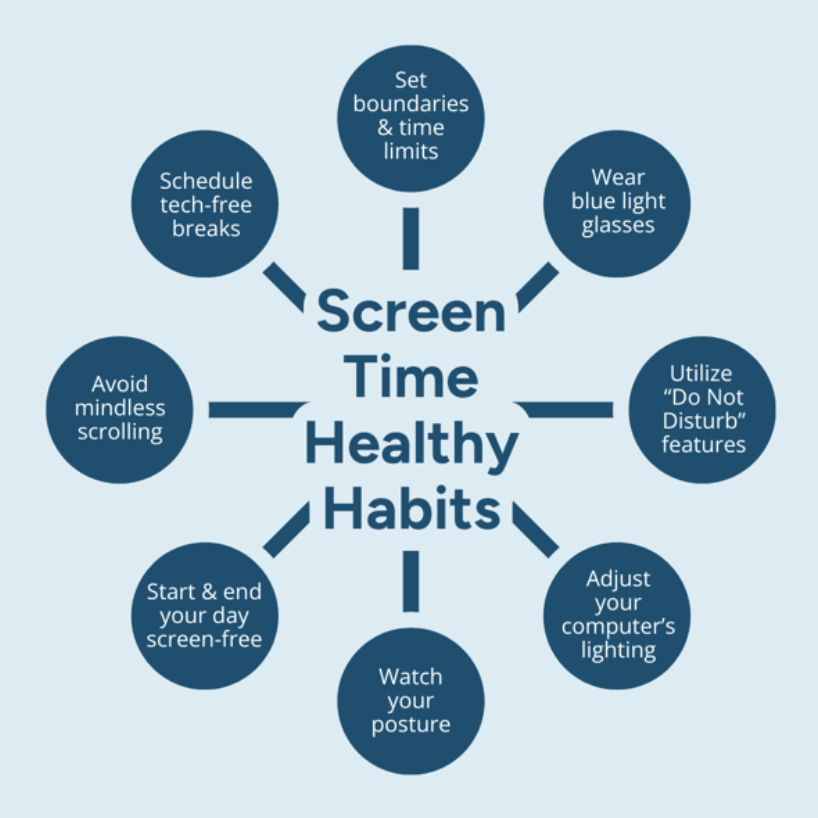School’s out, vacations are loading, and you finally have time to unwind!
While it’s always tempting to lean into more screen time, summer is also the perfect opportunity to re-evaluate our digital habits and invest in our well-being
In May, our ITS team highlighted Mental Health Awareness Month through a collaborative campaign with George Mason’s Center for the Advancement of Well-Being (CWB). But mental wellness shouldn’t be a focus for just one month—it’s something we can prioritize all year long, especially in the slower rhythm of summer.
Why it matters?
Summer is often associated with rest, travel, and quality time outdoors, but unstructured free time can be overwhelming and present unexpected mental health challenges. Shifts in routine, climate-related stress, and increased social expectations can impact both physical and emotional well-being.
Simultaneously, constant connectivity and social media comparison can lead to burnout or isolation. By being more intentional with our tech use, we can create space for rest and real connection, both online and off.
Healthy Screen Time Habits
Overuse of digital tools in our everyday lives can lead to reduced focus, sleep disruptions, and decreased physical activity. It’s impossible to avoid entirely, so ITS is here to help you find practical ways to build healthier habits, take control of your screen time, and protect your well-being this summer.

Digital Tools to Support Self-Care
Not all screen time is harmful—in fact, the right tools can uplift us and support our self-care journey. Below are a few digital resources to help you practice mindfulness, track your mood, and find the right support.
- Mindfulness and Meditation Apps
- Headspace: Offers guided meditation, sleep support, and stress relief
- Calm: Supports relaxation, improved sleep, and meditation
- Mood & Mental Health Tracking
- Daylight: Helps users identify patterns in anxiety and develop long-term coping strategies
- Moodfit: Provides mood tracking and customized self-care tools based on personal goals
- Peer Support & Therapy
- Betterhelp: Professional, confidential counseling available online
- Therapeer: Peer-based support networks for shared understanding and connection
Balancing Remote Work with Personal Time
Remote work and study can offer flexibility, but in the summer, it can blur the lines between relaxing and working. Whether you’re working from home or simply trying to stay productive while enjoying the sunshine, consider these tips to keep a balanced routine:
- Use Technology Intentionally
Lean on productivity apps during work hours and disconnect when your day is done. - Take Regular Breaks
Step away from your screen regularly to reset—whether that’s stretching, walking, or taking lunch away from your desk. - Define Your Work-Life Boundaries
Create distinct spaces and times for work and leisure to avoid mental fatigue. - Practice Self-Care
Make time for daily self-care through exercise, nourishing meals, sufficient sleep, and hobbies that recharge you. - Create a morning and end-of-day routine
Morning and evening routines help you transition smoothly between work and personal time. Engage in activities that energize you in the morning and those that decompress you at night.
This summer, embrace the opportunity to be intentional with your technology use. Practicing digital wellness isn’t about cutting technology completely but instead utilizing it to support your health and well-being. With a few small shifts in our tech habits, you can stay grounded, connected, and focused, all while having fun under the sun!
To learn more about well-being at George Mason and find additional resources, visit https://wellbeing.gmu.edu/.



